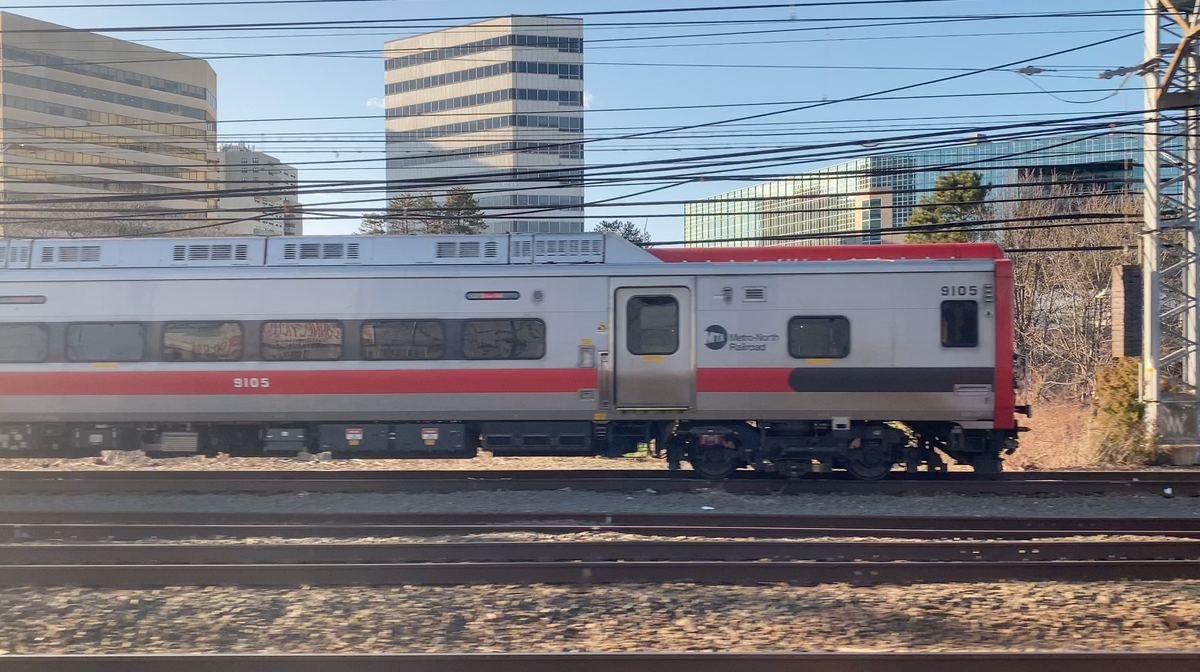Officials Outline ‘New Era for Rail’ in the Northeast Corridor in Southwest Connecticut
“I think over the next 10 years you’re going to find that Bridgeport is as close to New York City as Stamford is today,” Governor Ned Lamont said.

Billions of dollars worth of investments in rail infrastructure will provide safer, more efficient, and more sustainable transportation, as well as opportunities for economic development and more jobs. That was the message from state, local, and federal officials at a panel discussion called “Reinvesting in the Region’s Future: A New Era for Rail in the Northeast Corridor.”
In November 2023, President Joe Biden announced that $16.4 billion from the Bipartisan Infrastructure Law would go toward repairing and replacing “critical rail infrastructure along Northeast Corridor.”
Some of the projects in that funding include the Walk Bridge project in Norwalk, the Saugatuck River bridge replacement in Westport, power line improvements along the New Haven Line, and support for the state’s Time for CT initiative, which aims to speed up trains across the state.
Amit Bose, the administrator of the Federal Railroad Administration, said that they’ve had these projects ready but never had the funding to complete them until the bipartisan infrastructure bill.
“Connecticut is absolutely central to our efforts to improve the Northeast Corridor and get it ready for the next 100 years because this is such a critical part of our nation’s infrastructure,” he said. “The bipartisan infrastructure law has absolutely spurred across the board development. Places like Stamford are so well positioned—the planning that’s already gone into the station area and all those years of efforts that have been waiting for the bipartisan infrastructure law.”
The Power of the Northeast Corridor
The Northeast Corridor, which includes some of the country’s largest cities such as New York City, Boston, Philadelphia, Baltimore, and Washington D.C., as well as the surrounding areas—such as southwest Connecticut—includes just 2% of the United States’ land area, but is home to 17% of the country’s population and generates about 20% of the nation’s GDP.
In addition, much of that work and population is centered along the Northeast Corridor rail lines, according to Stephen Gardner, the head of Amtrak.
“About one-third of all jobs are within five miles of the Northeast Corridor,” he said. “About 80% of the population is within 25 miles of the Northeast Corridor. It truly is a central artery of commerce, mobility, and culture across the corridor.
The Northeast Corridor stretches more than 450 miles, includes 2,000+ trains each day with more than 600,000 Amtrak and commuter rail trips, according to Mitch Warren, the executive director of the Northeast Corridor Commission.
“The Northeast Corridor is the economic engine for the region,” Warren said.
That’s part of why Congress established the Commission, Warren said, to help bring together leaders from across the corridor to discuss some of its complexities, plan in a strategic way, and advocate for funding and projects.
Warren said that in 2021 they unveiled Connect 2037, a 15-year plan that “focuses on rebuilding and modernizing the corridor.” The plan calls for more frequent Amtrak service, expanded commuter rail, support for job growth, and more resilient infrastructure.
Connecticut: In the Heart of the Corridor
“Our geographic location is one of Connecticut’s great strengths,” Governor Ned Lamont said.
And one of the biggest strengths is the existing rail connections both to larger cities like New York City and Boston, as well as connections within the state, such as Stamford to New Haven or Waterbury to Bridgeport.
“Rail is a big piece of economic growth and economic development,” he said. “I know what rail means in terms of growth and opportunity in this state.”
Lamont cited the work taking place in Stamford in and around the Stamford Transportation Center to provide more housing, new businesses, and better facilities.
Stamford Mayor Caroline Simmons said that the transportation center is a big reason why the city is now the second largest in the state.
“We are the fastest growing city in the state,” she said. “We are the economic engine of the state. Our Stamford Transportation Center is a critical component of that economic growth. We are focused on business recruitment and retention and creating jobs in our city. We are working to attract additional businesses, add 1,000 units of workforce housing around the train station, and fill the empty parcels with more economic growth and vibrancy.”
Lamont said that in addition to supporting economic development, improved train service can alleviate some traffic challenges. He said that he hears all the time, “What are you going to do about traffic congestion? Ugh, I-95.”
His answer? “Rail.”
“If I can get you out of those cars, if I can get you into rail, what a difference that makes going forward,” Lamont said.
Gardner noted that train travel is also better for the environment, with fewer emissions than those driving in cars.
“There’s no path to a much lower carbon American without rail,” he said. “If we did nothing and everyone instead took a train once a week instead of driving—we’d make a huge dent. We just need more and more people taking trains.”
But Lamont and other officials acknowledged that’s an ongoing challenge as ridership on the New Haven Line—the main train line in Connecticut—is at about 73% of ridership compared to pre-pandemic levels. On the other hand, Gardner reported that Amtrak has had more riders than ever before—with about 110% of riders compared to pre-COVID times.
Still, he said that working to provide faster and more frequent trains will help entice people to consider taking the train.
Garrett Eucalitto, the commissioner of the Connecticut Department of Transportation, acknowledged that Connecticut is “the weakest link in terms of our speed,” along the Northeast Corridor as the state has a lot of curves that requires trains to slow down around them.
That’s why these infrastructure investments to provide straighter lines are so important, Lamont said.
“We have a lot of old infrastructure in this state,” he said. “What a difference [federal funding] Is making for this state, what a difference it’s making for this region.”
Looking Ahead
Lamont said that the infrastructure investments along the line will provide huge boosts to customers throughout the Northeast Corridor, but particularly for Connecticut residents.
“I think over the next 10 years you’re going to find that Bridgeport is as close to New York City as Stamford is today,” he said. “What that means in terms of development around this state is enormous.”
He also cited the Penn Station access project as a huge boost for Connecticut riders, as it will directly connect them to the station and new stations in the Bronx as well.
Simmons also said that “faster, more reliable trains make for a more efficient workforce.” She said that the $200 million in investments for the New Haven Line that’s intended to help speed up trains is projected to reduce commute times by an average of 26 minutes.
“That’s vital for our workforce,” she said.
One of the biggest challenges—and opportunities—according to Catherine Rinaldi, the president of Metro North is that the ridership has really changed since COVID.
“It’s not commuter ridership anymore exclusively,” she said. “We are the mode of choice for going to doctor’s appointments, for students, reverse commuters are a huge portion of ridership, especially on the New Haven Line.”
Rinaldi said that one of the biggest questions looking ahead is “how do we make commuter rail attractive to people who aren’t just commuters. That’s been a huge part of the strategy.”



